This story was co-published with The Arizona Republic.
It was getting dark when Arianna Bermudez caught her first glimpse of the Phoenix skyline, that evening in 2018, as her 2-year-old son, David, murmured peacefully in the back seat. But to Bermudez, it felt like a new day. This vast, rapidly growing city, stretching out before them after a long drive from California, offered her and David a genuine chance — perhaps not to have the easy middle-class existence of so many other recent transplants to Arizona, but to be safe and happy together as mother and child.
Before David, there had been no light in Bermudez’s life. Growing up in the high desert just north of Los Angeles, she’d been moved from one foster home to another for as long as she could remember. As a toddler, she had sharp objects held to her throat and ashes put in her eyes; she was also sexually abused, she later told officials.
Bermudez entered adulthood with little self-worth and less money, as is common among former foster kids. Still, she’d held onto the hope that she could make a better life for her own child, especially “a whole state away” in booming Phoenix.
Things did not go that way.
Bermudez soon discovered that she couldn’t afford Phoenix’s skyrocketing rent and child care costs, she said, despite working 12 hours a day at multiple jobs, including one at the ritzy Scottsdale Fashion Square shopping center and another at Walmart. Just months after she and David got to the city, she applied for welfare.
Arizona’s welfare department initially provided her with just over $200 a month, the lowest maximum amount offered by any state outside of the Deep South, where the cost of living is far less. But after a couple of payments, the agency stopped sending her the aid because her income from working was deemed too high for her to qualify.
Last year, on a monthly basis, Arizona denied an average of 3,709 out of 4,277 applications from poor families seeking cash assistance. Just 6% of all families in poverty here get such help, compared with a national rate of 23%.
A big part of the reason is that Arizona spends only 13% of its welfare funding on welfare itself, and none on child care or pre-K. Meanwhile, it diverts 61% of the dollars to the state’s child protective services system, which amounts to more than $150 million repurposed in this way every year, a ProPublica review of budget documents shows.
In other words, welfare in Arizona largely goes not to helping poor parents financially but rather to the state’s Department of Child Safety — an agency that investigates many of these same parents, and that sometimes takes their kids away for reasons arising from the poverty that they were seeking help with in the first place.
Arizona is an outlier in this regard. The average proportion of welfare funding spent on child protective services in other states is 8%.

This budget story took shape in Bermudez’s case. Because she was working from sunup to sundown without any state help to pay for safe housing or quality child care, she wasn’t around when David was allegedly touched inappropriately by a babysitter, records show. The incident made her so furious given her own history of abuse — and her total exhaustion — that the police were called to calm her down. She was arrested for disorderly conduct and spent the night in jail.
That’s when the state of Arizona spent some of the same welfare funding that it could have used to provide her with direct assistance to instead help pay for a child protective services investigation into her emotional state, Bermudez’s case documents reveal.
David was removed from her custody for more than six months and placed with a foster family — even though there were no allegations against Bermudez of child abuse or neglect, her case file says.
“It all connects,” Bermudez said. “If I’d gotten just a little bit more help, I wouldn’t have had to work until 10 p.m. every night, and I could have been with my child, and this never would have happened.”
Using the welfare dollars among other funding, the state of Arizona subjected Bermudez to a humiliating, and expensive, child welfare case. She had to take an IQ test and a word-recognition test, checking her for “mental deficiency/retardation”; she was also asked whether she binge eats or “gets very sexual,” according to her records.
Then she was instructed to find stable housing and to provide the department with ongoing documentation of her income, a requirement that she found to be deeply ironic.
Meanwhile David was wondering where his mom was, and, as a direct result, Bermudez said, “now I have a child who tests me to see if I’ll abandon him again, which I did not do.”
David sometimes has a panic attack if she so much as walks away, Bermudez said, which didn’t happen before he was taken by the state; he won’t go to sleep unless she’s in the room. “I have to fight tooth and nail,” she said, “to make sure this boy knows I love him more than anything.”
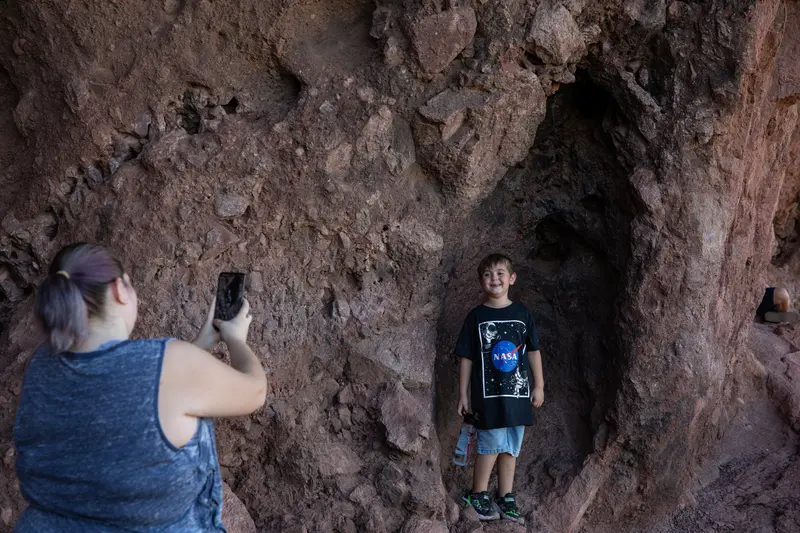
Leaving Welfare to the States
ProPublica has been examining welfare — this year marks the 25th anniversary of the welfare reform law signed by then-President Bill Clinton — in states across the Southwest, where sweeping demographic change has meant a higher cost of living and with it, the need for a better safety net.
The issue has become especially relevant this month as Congress debates the future of cash assistance for low-income families, now in the form of President Joe Biden’s proposed child tax credit. Republicans and Democratic Sen. Joe Manchin seem on the cusp of killing it, at least in its current iteration — in part by repeatedly citing the supposed success of the Clinton approach.
What the 1996 law did was hand welfare to the states, giving them a “block grant” of federal money intended for direct aid to the poor that can now be used in almost any way, as long as it falls under one of four extremely broad purposes for the cash. The logic was to turn states into laboratories for fighting poverty, each with its own ideas for administering what is called Temporary Assistance for Needy Families, or TANF.
“There has been a radical transformation of our cash assistance program in this country that’s gotten very little attention,” said Mark Courtney, a social work professor at the University of Chicago and an expert on the interaction between welfare and child welfare. Funding from TANF is used very differently depending on geography and thus has become “a massive experiment on low-income families from which we’ve learned very little,” he said.
All it has shown, Courtney said, is that states have learned how to use this aid money toward their own preoccupations.
At least 10 states dip into the welfare piggy bank to fund anti-abortion clinics, according to the research and advocacy organization Equity Forward; others dole it out to Christian summer camps or programs claiming to help compulsive gamblers. In Mississippi, more than a million dollars meant for public assistance went to former NFL quarterback Brett Favre for speaking engagements tangentially related to poverty that he didn’t show up to, according to reporting by Mississippi Today. (Favre later said he didn’t know the money originated from TANF and repaid most of the funds.)
In Arizona, the biggest winner has been the state’s massive, troubled child protective services system.
Each year, Arizona redirects upward of $30 million of its welfare funding to the salaries and expenses of DCS caseworkers, many of whom are tasked with investigating parents like Bermudez, which alone is over $8 million more than the state spends on welfare itself. And that’s in addition to $120 million in welfare money that goes to foster parents (who already get paid via other federal funding, unlike birth parents), adoption services, group homes and various other DCS programs.
In turn, Arizona’s child welfare agency has become a national outlier in its probing of some of the same low-income families who could have benefited from cash assistance.
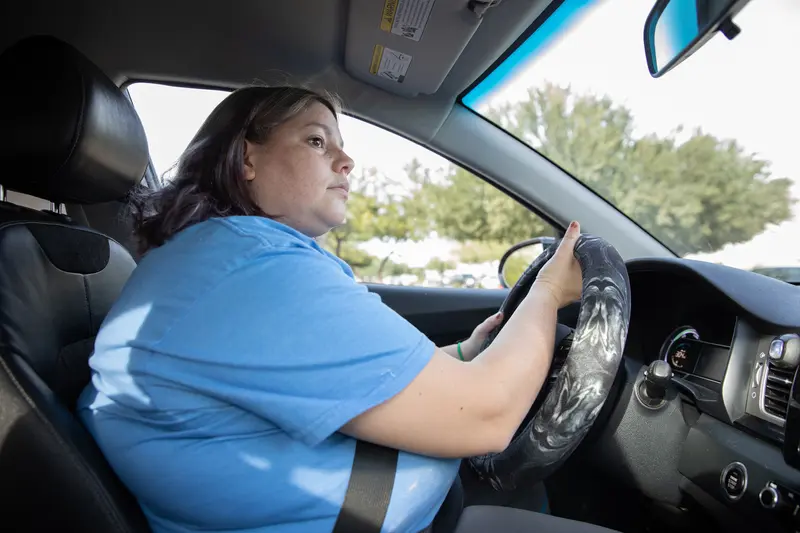
One recent study found that as many as 3 in 5 Black children in Phoenix will be subjected to an investigation by DCS by the time they turn 18, and that kids of all races here are 17.5 times more likely than those in New York City to be separated from their parents forever. Other research has shown that poor children in this city are taken from their homes at more than quadruple the rate of other large metropolitan areas like Chicago and Houston.
“If the outcome that you’re judging all this by is getting parents off welfare caseloads, then taking their children and placing them with another family is actually a win,” said Courtney, the University of Chicago professor.
In a written response to ProPublica’s reporting, Darren DaRonco, spokesperson for DCS, emphasized that the agency doesn’t use the welfare funding it receives from the state Legislature solely for investigations of families; the funds also go toward a variety of services to help keep parents and children safe and together.
“Contrary to popular belief, DCS doesn’t exist to take away children from their parents,” DaRonco said.
While DaRonco said he couldn’t legally comment on Bermudez’s case, for confidentiality reasons, he noted that the department works with families to assess their needs and strengthen their relationships in the shortest possible time frame, with the primary goal of keeping the child safe while avoiding the trauma of a prolonged separation.
With respect to racial disparities, DaRonco said, “We are acutely aware that challenges exist in Arizona and nationally for African American and Native American children becoming involved in the child welfare system.” He said the study finding such a high rate of investigations of families of color in Phoenix relied on data from a few years ago when the state was undergoing a child welfare crisis. “Since that time, we have made vast systemic improvements,” he said, including reducing the foster care population statewide by 24%. (He also said that DCS is working with one of the study’s authors to try to fix the disparities.)
“As a department,” DaRonco said, “we are committed to ensuring there is no racial bias in our practice.”
The Problem Is Poverty
It is perhaps the biggest question in child welfare circles: Is it more effective to try to help poor parents upfront, so that they and their children can stay together, which research shows is best for kids’ long-term health and mental health? Or is it better to pursue possibly safer (at least in the short term) interventions like foster care, if these mothers and fathers’ poverty is putting their children at risk?
DCS officials admit that removing children from their homes for reasons directly stemming from economic need is not the most proactive or even most cost-efficient approach — that a welfare case shouldn’t be turned into a child welfare one if possible.
“We all know that supporting children and families early on ... is going to prevent a lot of money spent trying to fix something later,” said Sue Smith, the agency’s statewide prevention administrator. “We’re also all aware that poverty is a stressor, that it leads to child maltreatment or to just not being aware of it because the parent is so busy or overwhelmed by life.”
But Smith also said it’s important to note that most low-income mothers and fathers don’t neglect their children, and in the instances when they do, substance abuse, mental health problems and domestic violence are often involved, too.
DaRonco, the DCS spokesperson, added that poverty alone is not sufficient grounds to remove a child from his or her parents. For that to happen, the agency must present specific reasons and clear evidence before a court of law as to why that child is unsafe living in that home.
In Arizona, more than 90% of child welfare cases are categorized as only having to do with neglect, which is often tied to poverty, rather than child abuse. The national rate is closer to 60%.
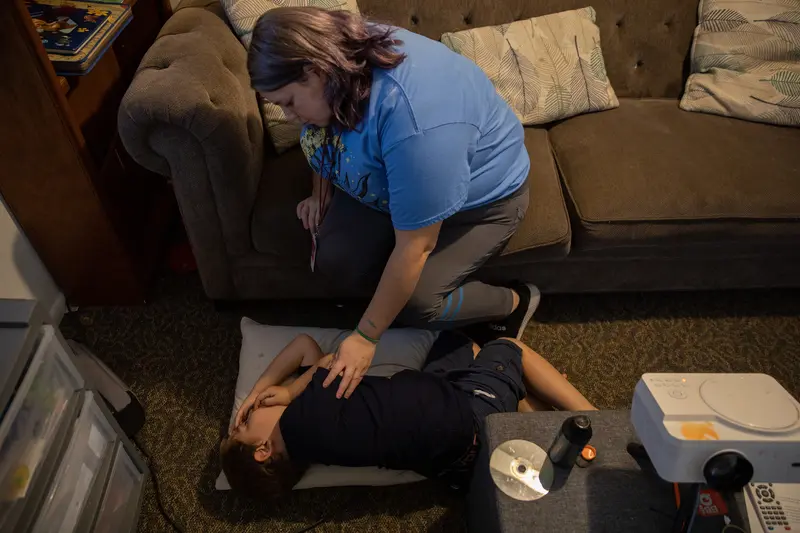
ProPublica interviewed or sent written questions to nearly a dozen former DCS caseworkers, asking them what they saw on the job. All but one responded that supervisory neglect — which often means a parent leaving a child alone or in an unsafe environment, in some cases due to being at work — as well as a lack of stable housing, electricity, running water, nutritious food, warm clothes or clean diapers, among other nonviolent parenting failures consistent with poverty, were the most common issues they discovered when responding to calls about child maltreatment.
The caseworkers also said that drug use and mental health problems were extremely common, though at times those concerns too were tangled up with economic misery. Sensational cases of physical or sexual abuse were exceedingly rare.
And how generous a state is with welfare, research shows, is directly associated with whether neglect (and even more serious harm) will spiral into a child being separated from his or her loved ones and placed in foster care.
Yet returning Arizona’s welfare dollars to welfare itself would require a commitment from Gov. Doug Ducey and the state Legislature to devote more of state taxpayers’ money, rather than this pot of federal funding, to DCS, so that the agency doesn’t have to balance its budget with funds meant for welfare applicants like Bermudez.
That doesn’t seem likely, given that Ducey recently signed into law nearly $2 billion in tax cuts for the wealthiest Arizonans and has said that, “Together, we will lower taxes this year, next year and the year after.” His administration’s stated goal has been to drive state income taxes as close to zero as possible in part to attract new businesses to Arizona — which has indeed been happening, contributing to the pricing out of the poor from Phoenix.
“Yeah, Because You Took My Son”
When DCS first came out to Bermudez’s home in October 2019, a caseworker reported that she and David appeared to have a “close relationship with each other; they are bonded.” There was no evidence of abuse, neglect or drug use on her part; the living area was clean and without health hazards.
“The reason she had so many jobs,” a case report said, “was because she needed money to give her child everything she could.”
But Bermudez was livid that night, screaming, cursing, because her kid had possibly been abused. David was temporarily taken into foster care.
This all could have been avoided, Bermudez thought, if she had just gotten the support to be able to afford her own apartment with David; instead, she had roommates, one of whom had been babysitting him when the incident allegedly happened.
So, Bermudez found a new home at the Phoenix Rescue Mission, a campus for poor and homeless families struggling with trauma that provides housing and child care among other programs.
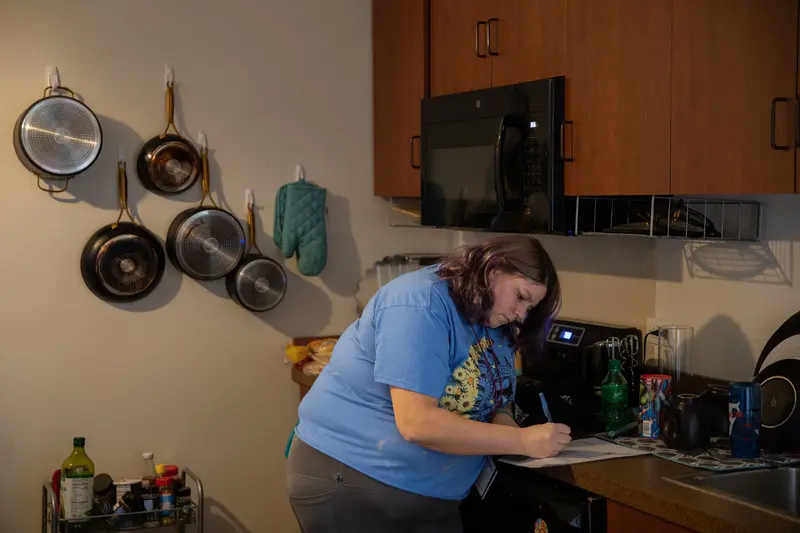
She thought she’d get her son back then, but the state, which had not given her a clear reason for David’s removal, sent her a notice saying, confusingly, that “the Department of Child Safety is continuing to provide you with services in an effort to alleviate the need for DCS involvement.” The agency was requesting that Bermudez “make specific behavior changes,” with failure possibly resulting in termination of her parental rights.
This led to court dates, supervised visits with David (some over video due to the pandemic) and weekly two-hour parenting skill sessions with a parent aide — services paid for, in part, using welfare dollars.
Then Bermudez underwent a psychological evaluation. She was asked what she does when she likes a person of the opposite sex (she smiles, she answered), when she’s with her friends (she giggles) and when her boss gives her an order (she follows it).
The agency found that Bermudez had trouble with depression — she sometimes cries, shaking, in the bathroom — and, earlier in her life, had considered suicide. And she was now presenting as tense, fearful, hypersensitive and experiencing a loss of pleasure in things she previously enjoyed.
“Yeah, because you took my son,” she said.
To get David back, she would need to not be suffering from depression, the records state, and to continue to prove that she could support him independently.
A State Government Careening From Crisis to Crisis
Arizona began spending welfare funds to pursue child welfare cases against parents like Bermudez almost immediately after welfare reform was passed.
Rebecca Rios, now the Democratic minority leader of the state Senate, was first elected in 1995, a year before the federal law went into effect. Yet she notes that the Legislature was already, at that point, considering how it might cut cash assistance and start repurposing this newly flexible funding source.
“While it is technically legal to use TANF dollars this way [on child welfare], it is a minimizing of state dollars to children, a minimizing of the state safety net,” Rios said. It also reflects a philosophy common in Arizona politics, she said, of using federal revenue streams meant to help the vulnerable instead to help fill state budget holes. (That includes, Rios pointed out, the state recently taking federal pandemic relief and using it for new executive offices for the state prison department, which the agency said it could do because the federal law authorized use of the funds toward public safety.)
In the early aughts, so many poor people were being kicked off welfare in Arizona due to the Clinton law’s strict requirements that there was welfare funding left over, a review of budget documents from the time shows.
Child welfare became a priority for those dollars after the news media spotlighted the tragic deaths of several children who had been left in their homes instead of being removed by officials. Then-Gov. Janet Napolitano zeroed in on this as a major crisis — which had the effect of causing thousands of additional kids to be taken from their families and enter the foster system in the following years.
“The primary source” of the funds transferred to child protective services to meet this new demand was TANF, read the minutes of a joint legislative budget committee meeting in 2007.
Then the Great Recession hit, and the budget for the Arizona Department of Economic Security, the welfare agency, had to be cut even more drastically.
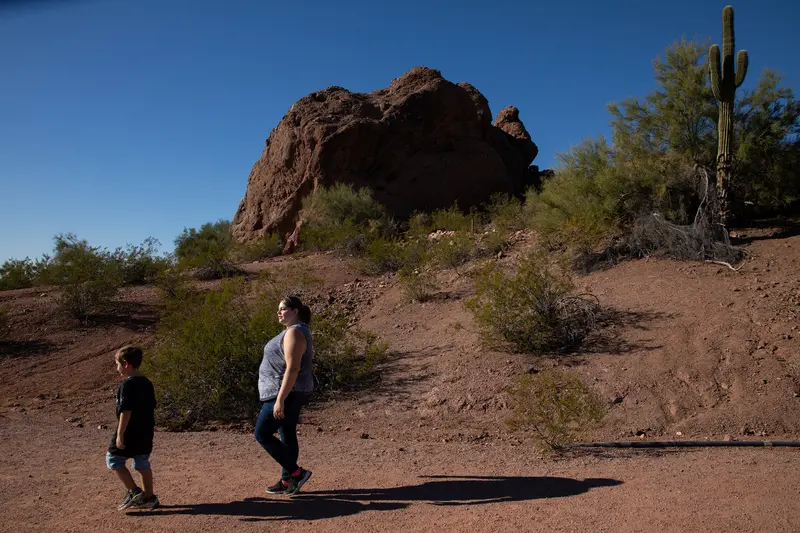
In a 2009 report to the new Gov. Jan Brewer, the department informed her that “the previous monthly maximum benefit for a family of three, $347, was clearly inadequate to meet families’ needs, but was reduced to about $278” to free up cash for the state. The document then pointed to another possible money-saver: reducing the time limit for receiving assistance, which, it said, would disqualify more than 17,000 children from getting help but would keep an additional $9 million annually in state coffers.
“The loss of access to this program could result in these children going without food or utilities, or even becoming homeless or entering the child welfare system because their parents are unable to provide for them,” the report said.
The governor approved the cuts.
In turn, from 2009 to 2015, Arizona saw the sharpest increase in its child welfare population of any state in the nation. Child maltreatment reports — overwhelmingly neglect cases — surged by nearly 18,000. Kids removed from newly economically struggling families were sleeping in caseworkers’ cars. Officials started triaging cases, closing many without fully investigating them, leading to a scandal that precipitated the firings of high-level staff.
Some of those employees shot back, suggesting that direct assistance to parents and children might have worked better all along: “These are the poor families. These are the families that don’t have resources,” one said.
But Brewer and the Legislature were already redirecting tens of millions of dollars in slashed welfare benefits over to child protective services to address the crisis, and in 2014, she called a special session to create a new standalone agency called the Department of Child Safety.
At the same time, the governor reduced corporate taxes by 30%, costing Arizona more than $530 million.
Then the Legislature shortened the time limit for welfare again — to a nation-low 12 months in a low-income person’s entire lifetime, with few exceptions. This cut off thousands of additional children from receiving aid so that the state could save a few million more dollars a year.
Brewer was unavailable to comment for this story, but her former chief of staff, Eileen Klein, said in an email that both the tax cuts and the TANF cuts were “part of a competitive reset for Arizona initiated by Gov. Brewer.”
“Those policy changes,” she said, “have made Arizona today a top business creation and expansion location in the nation, resulting in more and better jobs and improvements in household incomes post-Great Recession.”
In an interview, Klein added that Arizona was one of the states hardest-hit by the housing bubble-induced economic collapse, at one point facing the nation’s worst budget deficit. This required tough choices about spending.
But much of the state budget, Klein noted, was protected from cuts under federal and state laws, while welfare funding was more vulnerable (in part due to the flexibility given to states under the Clinton law). There was also a very conservative Legislature, led by Tea Party figures, pressing the governor for even deeper reductions to public assistance.
“Some of the decisions around the social safety net were personally very painful” to Brewer, Klein said. “It’s just that the entire government was contracting.”
Finally, Klein acknowledged that the welfare cuts coincided with a shifting of welfare funds to child protective services, which she said was another budget relief measure and a response to surging child neglect cases.
Her question is why the reduced welfare benefits, and the reappropriating of welfare dollars to DCS, have continued and even accelerated now that Arizona’s economy, budget and child welfare caseloads are all in better shape. She said ProPublica would have to ask Ducey, the current governor, about that.
C.J. Karamargin, spokesman for Ducey, pointed out that the governor signed legislation in 2017 to extend the welfare time limit back to two years — still down from five — if certain conditions are met, including that parents receiving assistance are working and that their kids have at least 90% attendance at school.
Karamargin did not respond to further requests for comment.
Almost every year, an amendment is proposed in the Legislature to restore Arizona’s welfare benefits to pre-recession levels, legislative records show. But, every year, the Republican majority blocks it.
The Long Shadow of a Child Welfare Case
David never had behavioral problems until he was taken by the state, according to Bermudez and also his foster parents, who said he had started hitting other children in their home, per case documents.
Because she’d grown up in the foster system herself, Bermudez was terrified that her child was starting to hate her from afar. She tried to feel worthy of motherhood: “Ms. Bermudez has a great longing to love herself,” a case report said.
She got David back in May 2020.
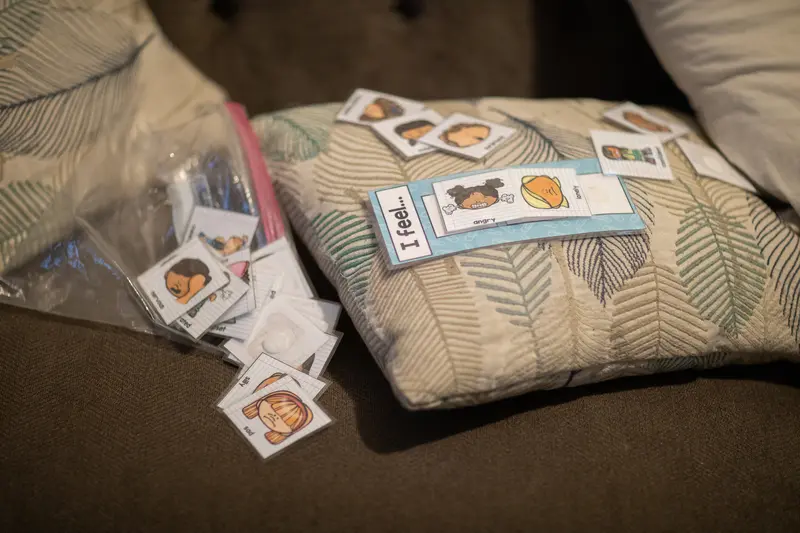
His abandonment issues were immediately obvious. Sometimes Bermudez couldn’t leave for work because David’s panic was so bad, and sometimes she was called home from work because he was getting mad at his babysitters at the Phoenix Rescue Mission campus because they weren’t her.
He’s getting so big now (unusually big for age 6) that he is starting to punch and kick the ladies taking care of him hard enough that it reminds Bermudez of abusive men from her past. That scares her, she said.
A behavioral coach visits every week, trying to solve the emotional problems that have surfaced since the DCS case.
Now, at 6:30 a.m. every day, before Bermudez heads to her new job at a Stitch Fix warehouse where she makes $16.50 an hour looking for stains and tears in clothing before it’s boxed and shipped to customers, she sits next to David and gives him cuddles and says, “OK, I’m going to work now, but do you know that you are loved so much?”
At their apartment at the rescue mission, they each have a twin bed in the same room; Bermudez would love to be able to afford a place where David could have his own bedroom, to start getting over the separation anxiety.
But the finances still don’t add up. Women on the campus have been talking about how the cost of living in Phoenix has been going up even further — how any apartment now will be near or over $1,000 a month, which means a first payment of close to $4,000 between first and last month’s rent and a security deposit and fees. Child care is also $15 to $20 an hour, significantly higher than the Arizona minimum wage. Then there’s car payments and gas, necessary to get anywhere in this sprawling state, and all the clothes and shoes that have to be bought for a growing boy.
“How is it that we’re supposed to pay for everything when wages don’t match what things cost?” Bermudez asked this month.

Sometimes on her short drive home from Stitch Fix, Bermudez said, she thinks about the dreams that she once had, and that many who relocate to Arizona have, of a real career.
In foster care, she always had to cook, and she got pretty good at it. She wishes she could study the culinary arts and maybe own a vegan food truck one day.
But then before she knows it the drive is over, and she has to get out of the car and forget about all that. She is back to life in the shadow of a child welfare case, where every day is a struggle not just to be a single mother in this desert city, but to persuade David, finally, of the words she wrote to him in a note stuck to the wall outside their bedroom:
Mothers Love
A mom’s love is everlasting eternal & unconditional
A mother’s heart is overjoyed in the smile of their little one
A word spoken in love a laugh a giggle the touch of a hand
Moms hold on, talk, and nurture you
The warmth & glow of a loving heart is soft & snug like a little bug
Tucked in with all the love
For: David
From: Mommy, always & forever
Mollie Simon contributed research.





